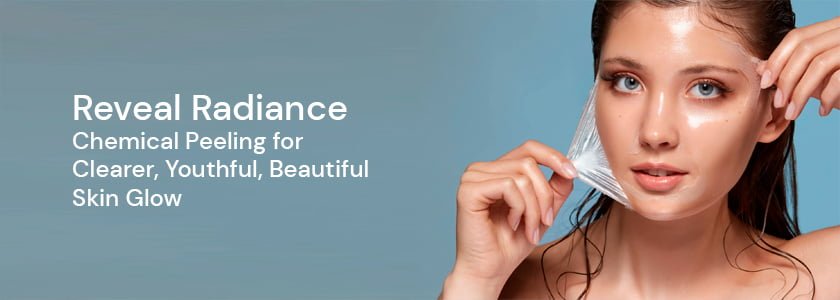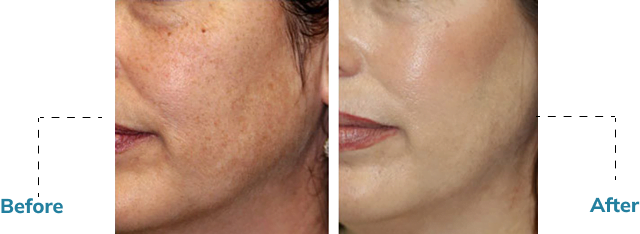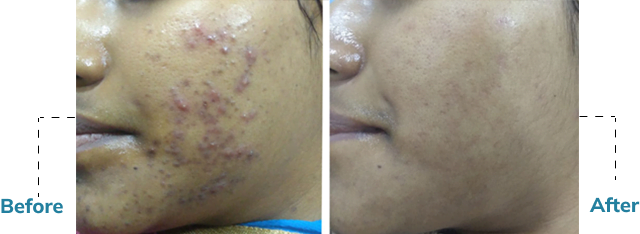Chemical Peeling

Chemical peeling is used to improve and smoothen the texture of the facial skin using a chemical solution that causes the dead skin to eventually peel off. The regenerated skin is usually smoother and less wrinkled than the old skin.
Alpha Hydroxy Acid Peels
They are naturally occurring carboxylic acids such as glycolic acid, a constituent of sugar cane juice and lactic acid, found in sour milk and tomato juice. This is the mildest of the peel formulas and produces light peels for treatment of fine wrinkles, uneven pigmentation and acne.
AHAs can also be mixed with face wash or cream in lesser concentrations as part of the daily skin-care regimen to improve the skin texture.
There are five usual fruit acids: citric acid, glycolic acid, lactic acid, malic acid and tartaric acid. They may cause stinging, redness, mild skin irritation, and dryness.
Beta Hydroxy Acid Peels
The BHA peels are used instead of AHA peels due to its ability to penetrate deeper into the pore than AHA. Studies show that BHA peels control sebum excretion, acne as well as remove dead skin cells to a certain extent better than AHAs because AHAs are working only on the surface of the skin. Salicylic acid is a beta hydroxy acid.
Jessner’s Peel
Jessner’s peel solution was pioneered by Dr Max Jessner, a German-American dermatologist. He combined 14% salicylic acid, lactic acid, and resorcinol in an ethanol base. It is thought to break intracellular bridges between keratinocytes.It is very difficult to “over peel” the skin due to the mild percentages associated with the acid combination, and does not penetrate as deeply as other chemical peels.
Retinoic Acid Peel
Retinoic acid is a retinoid. This is a deeper peel than the beta hydroxy acid peel.
It is used to remove scars as well as wrinkles and pigmentation problems.
It is usually performed in conjunction with the Jessner; which is performed first, in order to open up the skin, so the retinoic acid can penetrate deeper level. The client leaves with the chemical peel solution on their face. The peeling process takes place on the third day. More dramatic changes to the skin require multiple peels over time.
Results


